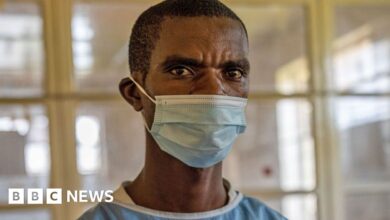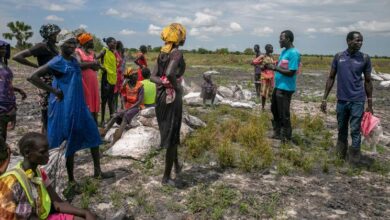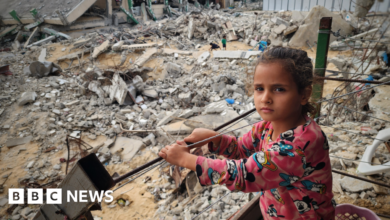Influencers risk death for clicks and cash
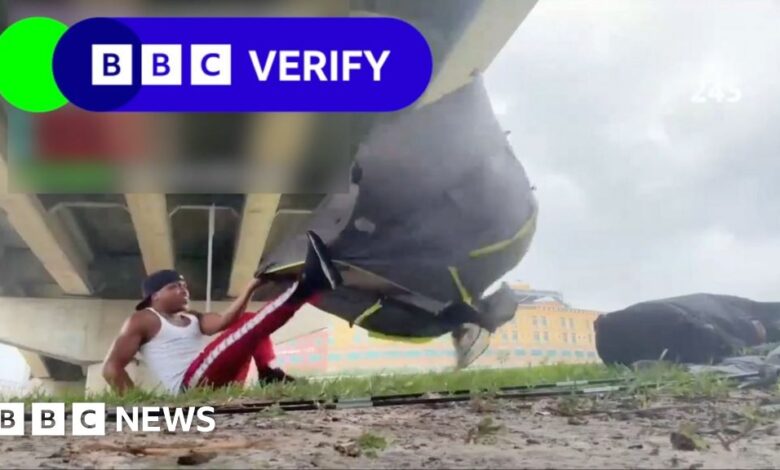
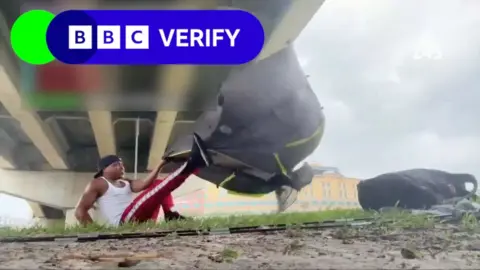 MikeSmallsJr
MikeSmallsJrWhile millions of people in Florida fled Hurricane Milton, Mike Smalls Jr. ventured into the fierce winds of Tampa, Florida, carrying an inflatable mattress, an umbrella and a package of ramen noodles.
He was out on Wednesday night as the storm hit the US state and streamed live on the Kick platform. He told his online audience that if he reached 10,000 views, he would launch himself and his mattress into the water.
When he reached the threshold, he rushed in. Then he worried: “The wind started to pick up and I didn’t know how to swim…so I had to hold on to the tree.”
The area is under an evacuation order – meaning residents have been advised by local officials to leave their homes for their own safety.
Mike’s hour-long live stream from Tampa Bay has more than 60,000 views on the streaming platform Kick and was viewed by millions of people after being clipped and posted on other social media platforms, including including X.
Live streaming – filming yourself in real time – is becoming increasingly lucrative for content creators looking to make a quick buck.
But these streams can involve stunts as content creators try to stand out in an increasingly competitive environment.
Many people have criticized Mike’s behavior on social media, claiming that he is risking his life for clicks.
He played it safe – and told me he would do the risk again, “if the price was right”.
When asked about the backlash, he admitted what he did was “controversial” and admitted that some people might think he was risking not only his life but the lives of others. the lives of those who may have to save him. However, he added: “From a content creator’s perspective, people like to watch edgy things.”
“Ignoring mandatory evacuation orders puts lives at risk,” the Tampa Police Department said in a statement. When individuals disregard these warnings, they not only jeopardize their own safety but also create additional challenges for first responders who are working tirelessly to save lives.
“Deliberately placing yourself in danger could divert vital resources and delay vital rescue operations for others.”
Hundreds of people have died in this year’s hurricane season, which has devastated much of the southeastern US coast.
Millions of people were forced to evacuate when Hurricane Milton, considered a Category 5 storm at its peak, made landfall Wednesday along Florida’s Gulf Coast. At least 16 people died in the storm, millions remained without power and thousands had to be rescued by first responders as water flooded their homes.
Storm Helene And Milton ended a particularly busy period of tropical weather in the US. In less than two weeks, five hurricanes have formed – not far from what the Atlantic typically sees all year.
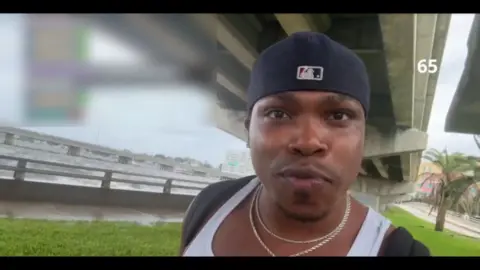 Mike Smalls Jr.
Mike Smalls Jr.Mike is among a number of content creators on social media platforms, including Kick and TikTok, who livestream and make money from performing daredevil stunts and risking their lives. yourself during the storm.
He said livestreaming content is Mike’s full-time job.
Previous stunts posted on his profile include setting off fireworks in his bedroom and capturing employees in fast food restaurants.
His plan for livestreaming Hurricane Milton is: “Get some good clips and then, if things get too intense, you know, I might just follow up with a little 5, 10 minute walk.” mine to return home,” he added.
This is not the first time he has been in danger.
A few weeks before Milton, he went into Hurricane Helene — which also hit Florida — carrying a tent as a prop and livestreamed for more than five hours.
He filmed himself on his phone holding up the tent in the tunnel and saying he “will survive the storm. Why? To entertain people.”
Just a few meters away, the ocean was crashing down on the fence.
“My job is just to entertain and come up with creative things to entertain my conversations. And if people want, you know, if they’re inspired by what I do, I respect that,” he said, adding that you have to evaluate and “do things at your own risk.” “.
Platforms like Kick offer incentives: money for the number of views the streamer gets and donations from people who like what they’re doing.
Smalls Jr. didn’t specify how much money he made from this particular livestream, but said the figures varied by streamer, with some making $300 to $400 per hour. He added that he made enough money from his latest broadcast to pay a few bills.
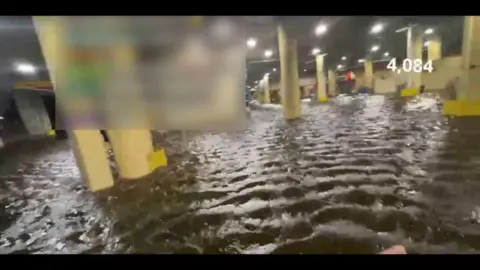 MikeSmallsJr
MikeSmallsJrIt may seem like he’s doing anything to get views, Mike said, but he said he takes safety very seriously. Even though he couldn’t swim, he insisted he had assessed the risks.
He spoke bravely after surviving the natural disaster: “I stayed here, I didn’t die and I was cold.”
When asked to answer specific questions about Smalls Jr and the platform’s responsibilities, Kick said it is a “fiercely creator-first platform and we do not influence the content creators Our creator chose to stream online. However, if that content violates our Terms of Service or is illegal in any way, we may impose a ban or suspension.”
They did not comment when asked about whether Smalls Jr’s actions violated their specific community guidelines, which detail: “Safety First: Prioritize your own safety , the audience, the public and anyone else involved.”
TikTok told the BBC that its monetization guidelines outline how some content is not eligible for monetization through LIVE features, including “content that deceives or manipulates others… exploiting controversial topics to attract participation or exploit the pain of vulnerable people.
Mike’s profile – and the contents of his storm – still exist.
When asked about endangering the lives of emergency workers, Smalls Jr. said he knew what he was getting into.
“Don’t save me,” he said. “What if I cause another storm? Okay. You don’t have to say anything. I don’t want to put your life in danger. No.”



